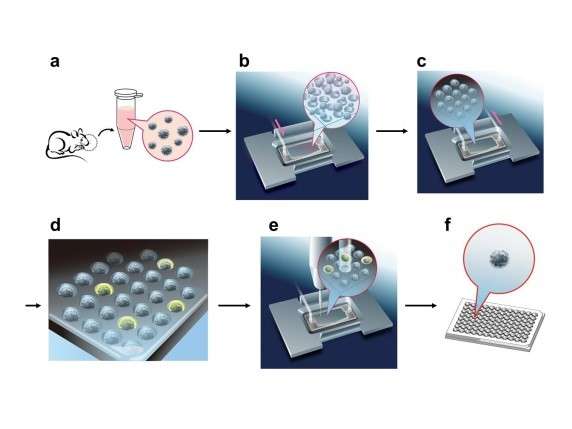New method for exhaustively isolating olfactory receptors responding to specific odorants

A research group led by Osaka University and Panasonic Corporation developed a method for making a prompt, exhaustive isolation of olfactory receptors (ORs) responding to the odorant of interest. This achievement will enable quick and easy exhaustive analysis of ORs responding to specific odorants, which previously required a great deal of time and effort. These results may be applied to biosensors capable of highly detecting only desired odorants.
Paying attention to the fact that each olfactory sensory neuron (OSN) expresses an OR, Shun'ichi Kuroda, Professor and Nobuo Yoshimoto, Specially Appointed Associate Professor at the Department of Biomolecular Science and Reaction, The Institute of Scientific and Industrial Research, Osaka University in cooperation with Masato Suzuki, Chief Researcher, Advanced Research Division, Panasonic Corporation made a system in which OSNs from mice were applied to a microchamber array on a microscope slide and fluorescence was yielded when ORs responded to odorants. Using the Single-Cell Automatic Analysis and Isolation System developed in 2013, this group isolated single OSNs responding to specific odorants in a time-lapse single-cell-array cytometric manner and identified the OR gene through single cell polymerase chain reaction (PCR).
As a result, this group succeeded in isolating ORs which respond to three types of volatile organic compounds (2-pentanone, pyridine, 2-butanone) respectively in urine samples from lung cancer patients. Like OSNs, animal cells expressing ORs responded to the odorant of interest, emitting fluorescence.
This research was featured in the electronic version of Scientific Reports on Tuesday, February 2, 2016.
More information: Masato Suzuki et al. Deciphering the Receptor Repertoire Encoding Specific Odorants by Time-Lapse Single-Cell Array Cytometry, Scientific Reports (2016). DOI: 10.1038/srep19934














